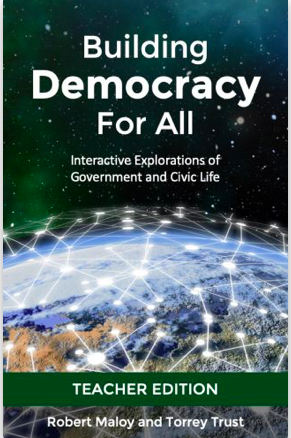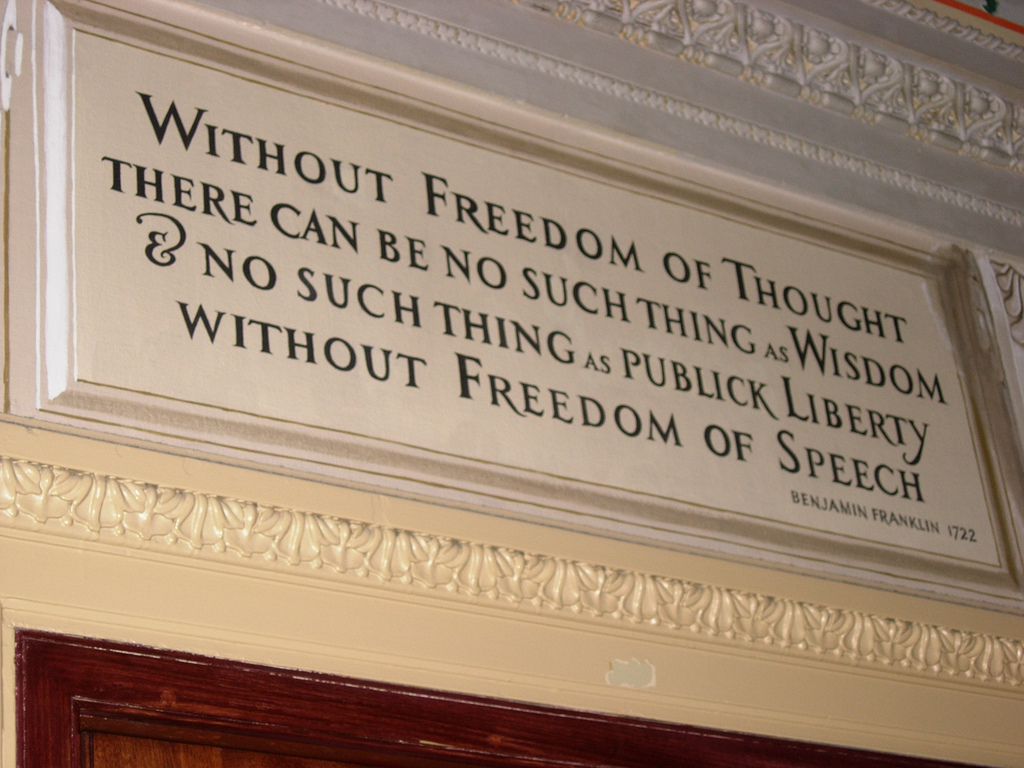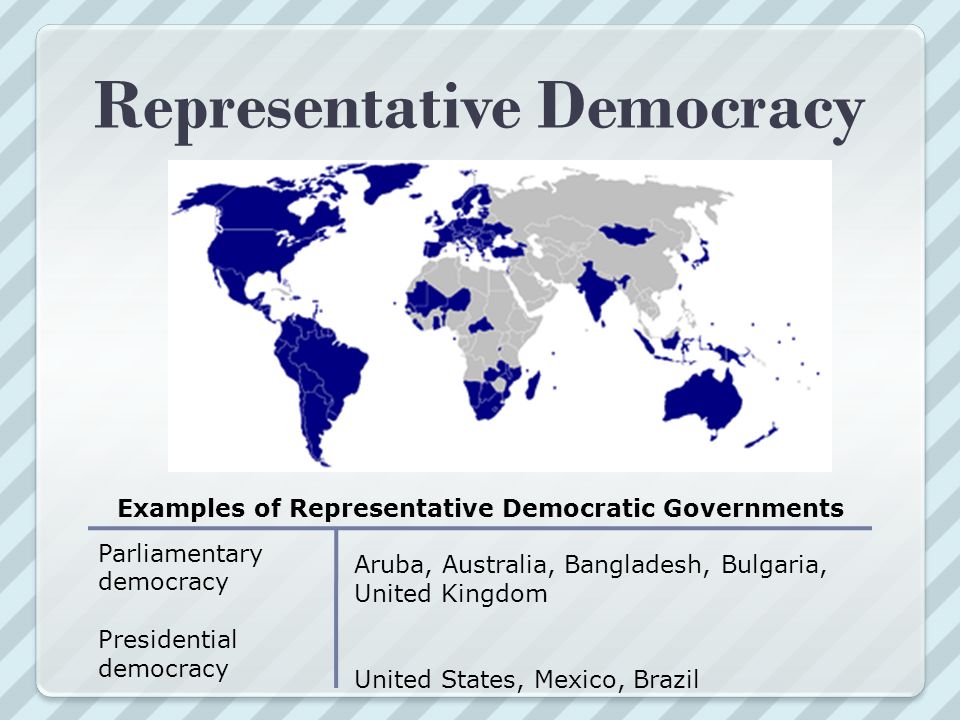1977 U.S. Postage Stamp

Focus Question:
How does the Constitution and the Bill of Rights express and sustain key political principles and fundamental values of American democracy?
Topics on the Page
A. Individual Rights and Responsibilities
- Each person's civic duties
B. Citizenship and Equality
C. Separation of Powers
D. Federalism
E. Representative democracy
 Engaging: What Are and Should Be Student Rights at School?
Engaging: What Are and Should Be Student Rights at School?
- Speech
- Dress Codes
- Discipline
- Social Media
- Protests
 CROSS-LINK: Student Legal Rights at School
CROSS-LINK: Student Legal Rights at School
 Constitute: The World's Constitutions to Read, Search and Compare
Constitute: The World's Constitutions to Read, Search and Compare
- Read the constitutions of 193 constitutions covering nearly every independent nation in the world as of September 2013.
 A link to the interactive Constitution, an accessible look at the document and its meaning.
A link to the interactive Constitution, an accessible look at the document and its meaning.
Preamble - A summary of Intent and Principles
"We the People of the United States, in Order to form a more perfect Union, establish Justice, insure domestic Tranquility, provide for the common defence, promote the general Welfare, and secure the Blessings of Liberty to ourselves and our Posterity, do ordain and establish this Constitution for the United States of America."
- Click here for a short breakdown of the Constitution's preamble.
- Importantly, this text is non-binding, and it serves solely as an introduction for the following document.
A. Individual Rights and Responsibilities
 The Bill of Rights (1789) guaranteed the essential rights and liberties of every citizen. It was not part of the original Constitution of 1787.
The Bill of Rights (1789) guaranteed the essential rights and liberties of every citizen. It was not part of the original Constitution of 1787.
From the National Archives:
"During the debates on the adoption of the Constitution, its opponents repeatedly charged that the Constitution as drafted would open the way to tyranny by the central government. Fresh in their minds was the memory of the British violation of civil rights before and during the Revolution. They demanded a "bill of rights" that would spell out the immunities of individual citizens. Several state conventions in their formal ratification of the Constitution asked for such amendments; others ratified the Constitution with the understanding that the amendments would be offered."
Power is reserved to the people. The Bill of Rights stands as a platform for American democracy and freedom.
Here is a simplified list of the Bill of Rights, with a mini review quiz at the end!
Rights are not limited to the first 10 Amendments, as there are an additional 17 Amendments that provide both rights-based and procedural changes to the Constitution.
Civic Duties found in the Constitution:
- It is the responsibility of the people to remain loyal to the United States. Those who do not adhere to this responsibility could be tried for treason.
- Citizens are responsible to serve as impartial jurors if called upon.
- The right to a jury trial is established by the 6th Amendment.
- The Constitution establishes an army and navy and provides the Congress with the power to raise armies. It is the responsibility of the people to serve if called upon.
- It is a responsibility of people over 18 who are eligible to vote to do so.
- The age of 18 was set by the 26th Amendment.
 Here is a learning plan idea for middle & high schoolers on Exploring the Duties & Responsibilities of A Citizen that can be simplified for younger learners.
Here is a learning plan idea for middle & high schoolers on Exploring the Duties & Responsibilities of A Citizen that can be simplified for younger learners.

B. Citizenship and Equality:
- The Constitution and its Amendments were an innovative set of principles that enumerated protections for the inherent rights of American citizens. But one question was left controversial in the drafting of and aftermath of the Constitution: rights for whom?
- What does it mean to be a citizen? In the original Constitution, the conception of citizenship was limited, explicitly excluding particular groups.
- Enslaved black Americans were determined to only count as 3/5ths of a person as per Article I, Section II.
- Click here to read more about the 3/5ths Clause.
- Slavery and its surrounding controversy further marred the Constitutions. Several clauses that existed served to either protect - or signal future restrictions on - slavery.
- Article I, section IX includes a clause restricting Congress from prohibiting the slave trade until the year 1812. While a protection for slavery, that protection had a clear sunset period, which opened the door for a future prohibition on slavery.
- Article IV, section 2 prevents the ability of a slave to flee into a different state to escape bondage.
- Provided legitimacy to slave catchers. Click here to read about how they generated the need for the Underground Railroad.
- Citizenship and equality, particularly in regards to race, was addressed in the Constitution following the Civil War through the 13th-15th Amendments.
- The 13th Amendment (1865) banned slavery.
- The 14th Amendment (1868) guaranteed equal rights of citizenship to all Americans, with the special intention of protecting the rights of former slaves.
- Click here for a brief explanation of the 14th Amendment's Citizenship clause.
- The 15th Amendment (1870) provided voting rights to all men regardless of race.
- The 19th Amendment extended the right to vote to women.
Read more The African American Struggle For Equality before and beyond the 13th, 14th, and 15th amendments.
Check out this website on the proposed Equal Rights Amendment!
C. Separation of Powers
- The Constitution deliberately divides the powers of the federal government into three interconnected branches to mitigate the centralization of power.
- Articles I, II, and III establish the Legislative, Executive, and Judicial branches respectively.
- Central to the principle of separation of powers is the concept of checks and balances.
- Each branch has enumerated powers meant to keep the others in line. That web of checks and balances reduces the possibility that any one branch could hold absolute power.
- Examples of checks and balances include:
- Congress' ability to declare war, which limits the Executive's authority over the military. (Article I, section 8).
- The President is granted the power of appointment, which includes to the judiciary and thus the Supreme Court. (Article II, section 2).
- The Judiciary is granted jurisdiction to rule over all United States laws and treaties. (Article III, section 1).
- Which branch did the Founders worry about the most?
- That was a divisive topic which informed the checks and balances system.
- Alexander Hamilton famously called the judiciary the weakest branch when defending it in Federalist 78.
- Click here to watch a video outlining the separation of powers and its system of checks and balances.
D. Federalism
- Another central principle within the Constitution is that of federalism - a division of power between the state and federal government.
- State identities were important in Colonial America, and a federalist approach sought to respect that while creating a centralized State.
- Click here to learn more about the Federalist and Anti-Federalist debate.
- Federalist language is sprinkled throughout the Constitution. One significant example is that the Bill of Rights did not originally extend to the states.
- That can be seen in the 1st Amendment, which begins with: "Congress shall make no law...".
- The Bill of Rights was gradually applied to the states after the ratification of the 14th Amendment. Its due process clause was used as a vehicle to apply the rights piecemeal to the states, as seen in cases such as McDonald v. City of Chicago (2010).
- The 10th Amendment reserves undelegated and unrestricted powers to the states.
- The 14th Amendment granted the federal government, particularly the Supreme Court, more power over the states through its gradual application of the Bill of Rights to the states.
- The federal government is given particular discretion over the states when an interaction between states is involved.
- For example, Article I, section 8's commerce clause grants Congress authority over interstate commerce.
- This article outlines how the commerce clause was supported early on by Justice Marshall but waited to grow its teeth until the New Deal.
- Powers can also be enumerated explicitly to the states in the Constitution.
- The now-defunct 18th Amendment granted the states concurrent jurisdiction over enforcing Prohibition laws.
- Here is a video on how and why the US Government is limited.
E. Representative Democracy:
- The mode of governance constructed by the Constitution, representative democracy is a result of a principled belief that the citizenry should have a role in determining how a government functions.
- The Constitution includes many procedural elements regarding how representatives should be elected, and what the institutions they are elected to will look like.
- For example, Article II, section 1 established the electoral college as the method by which the president would be elected.
- Click here to learn about the electoral college and how it works.
- Constitutional Amendments have modified the electoral process.
- One example would be the 22nd Amendment, which sets term limits for the office of the presidency.
- While representation is an important Constitutional principle, it is by no means an absolute one. Structures exist that reduce the amount of representation that the people have in particular areas of government.
- The President's appointment power is a key example of that. Positions that the President appoints to, namely the bureaucracy and the judiciary, are outside of the reach of voters. However, if voters do not favor certain appointments, they can cast votes for a different president as a means of holding him or her accountable.
- Many states allow voters to have a say in their state judiciaries, offering a more expansive conception of representative democracy than the federal government.
- Click here to learn about Justice Frankfurter and his view that the Court was not necessarily democratic.
An illustrated approach to Representative Democracy
Students can look at this kid friendly page on types of democracy and what the US uses, and then take the quiz at the end!

Here is an extensive lesson plan exploring the Fundamentals of Representative Democracy.
Here are some more ideas for having students learn about democracy - click around!
 Engaging: What Are Student Rights at School?
Engaging: What Are Student Rights at School?
Minnesota High School Students Walked Out of School to Demand Changes to Gun Laws (March 7, 2018)

My School My Rights: Know Your Rights, ACLU of California
Student Rights at School: Six Things You Need to Know, American Civil Liberties Union
Boston Student Rights, Board & Boston Student Advisory Council
Freedom of Speech
The First Amendment in Schools: A Resource Guide, National Coalition Against Censorship
Dress Codes
School Dress Codes
School Dress Code Pamphlet, ACLU of Rhode Island
School Discipline
School Discipline Pamphlet, ACLU of Rhode Island
Social Media
Student Social Media Rights, ACLU Northern California
Protests
Student Walkouts and Protest at School, ACLU Maine

Students' Constitutional Rights in Public School, Gilder Lehrman Institute of American History
The Rights of the Child, Teaching Tolerance
- Students build their own Bill of Rights
Sources:
Democratic Values — Liberty, Equality, Justice
Comments (0)
You don't have permission to comment on this page.